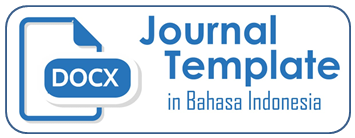Tren Penelitian Global tentang ASI Eksklusif: Analisis dan Visualisasi Bibliometrik pada Database Scopus (2021-2024)
DOI:
https://doi.org/10.32524/jksp.v8i3.1687Keywords:
Exclusive Breastfeeding, Bibliometric, ScopusAbstract
Exclusive breastfeeding during the first six months of life is one of the most effective public health interventions for preventing infant mortality and improving child nutritional status. However, its practice continues to face numerous challenges, including policy constraints, cultural barriers, and limited access to information. This study aims to analyze trends, collaboration patterns, and topical focus in scientific publications on exclusive breastfeeding during the period 2020–2024. The method employed in this study is a quantitative-descriptive approach using bibliometric analysis based on data retrieved from the Scopus database. The collected data were then analyzed using VOSviewer software to identify publication trends, citation patterns, and prevalent keywords. Based on bibliometric analysis and visualization, global research trends on exclusive breastfeeding show a declining pattern during the period from 2020 to 2024, with a peak in publication activity observed in 2020 followed by a decrease in subsequent years. Through analysis using VOSviewer, seven major thematic clusters were identified, featuring dominant keywords such as exclusive breastfeeding, stunting, and infant health. The analysis and visualizations in this study highlight both well-established themes and underexplored areas, including postpartum factors and anthropometric indicators. These findings confirm a shift in research focus and offer direction for future studies and the development of informed policies.
References
Cai, Xiaodong, Tessa Wardlaw, and David W. Brown. 2012. “Global Trends in Exclusive Breastfeeding.” International Breastfeeding Journal 7: 2–6. https://doi.org/10.1186/1746-4358-7-12.
Christian, Parul, Emily R. Smith, Sun Eun Lee, Ashley J. Vargas, Andrew A. Bremer, and Daniel J. Raiten. 2021. “The Need to Study Human Milk as a Biological System.” American Journal of Clinical Nutrition 113 (5): 1063–72. https://doi.org/10.1093/ajcn/nqab075.
Dadi, Abel Fekadu, Emma R. Miller, and Lillian Mwanri. 2020. “Postnatal Depression and Its Association with Adverse Infant Health Outcomes in Low-and Middle-Income Countries: A Systematic Review and Meta-Analysis.” BMC Pregnancy and Childbirth 20 (1). https://doi.org/10.1186/s12884-020-03092-7.
Fleischer, David M., Edmond S. Chan, Carina Venter, Jonathan M. Spergel, Elissa M. Abrams, David Stukus, Marion Groetch, Marcus Shaker, and Matthew Greenhawt. 2021. “A Consensus Approach to the Primary Prevention of Food Allergy Through Nutrition: Guidance from the American Academy of Allergy, Asthma, and Immunology; American College of Allergy, Asthma, and Immunology; and the Canadian Society for Allergy and Clinical.” Journal of Allergy and Clinical Immunology: In Practice 9 (1): 22-43.e4. https://doi.org/10.1016/j.jaip.2020.11.002.
Halken, Susanne, Antonella Muraro, Debra de Silva, Ekaterina Khaleva, Elizabeth Angier, Stefania Arasi, Hasan Arshad, et al. 2021. “EAACI Guideline: Preventing the Development of Food Allergy in Infants and Young Children (2020 Update).” Pediatric Allergy and Immunology 32 (5): 843–58. https://doi.org/10.1111/pai.13496.
Herdhianta, D., Assafa, M. R., & Saleh, H. D. 2023. “The Effect Of Leaflet Media On Mother’s Knowledge About Basic Immunization.” Jurnal Bahana Kesehatan Masyarakat (Bahana of Journal Public Health) 7 (1): 6–10.
Meek, Joan Younger, and Lawrence Noble. 2022. “Policy Statement: Breastfeeding and the Use of Human Milk.” Pediatrics 150 (1). https://doi.org/10.1542/peds.2022-057988.
Neves, Paulo A.R., Juliana S. Vaz, Fatima S. Maia, Philip Baker, Giovanna Gatica-Domínguez, Ellen Piwoz, Nigel Rollins, and Cesar G. Victora. 2021. “Rates and Time Trends in the Consumption of Breastmilk, Formula, and Animal Milk by Children Younger than 2 Years from 2000 to 2019: Analysis of 113 Countries.” The Lancet Child and Adolescent Health 5 (9): 619–30. https://doi.org/10.1016/S2352-4642(21)00163-2.
Oyetunji, Aderonke, and Prakash Chandra. 2020. “Postpartum Stress and Infant Outcome: A Review of Current Literature.” Psychiatry Research. https://doi.org/10.1016/j.psychres.2020.112769.
Qiao, Jia, Li Jing Dai, Qing Zhang, and Yan Qiong Ouyang. 2020. “A Meta-Analysis of the Association between Breastfeeding and Early Childhood Obesity.” Journal of Pediatric Nursing. https://doi.org/10.1016/j.pedn.2020.04.024.
Tondak, Navya, Mahati Bhadania, Palka Mittal, Sapna Yadav, Aditya Kukreti, J. Swaminathan, and Puneeta Ajmera. 2024. “Breastfeeding Practices and Immunity Outcomes among Infants: Bibliometric Analysis 2012-2022.” Journal of the Dow University of Health Sciences 18 (3): 170–80. https://doi.org/10.36570/jduhs.2024.3.2056.
Vandenplas, Yvan, V. P. Carnielli, J. Ksiazyk, M. Sanchez Luna, N. Migacheva, J. M. Mosselmans, J. C. Picaud, M. Possner, A. Singhal, and M. Wabitsch. 2020. “Factors Affecting Early-Life Intestinal Microbiota Development.” Nutrition. https://doi.org/10.1016/j.nut.2020.110812.
Wahidmurni. 2025. “HUBUNGAN SELF EFFICACY IBU DENGAN PEMBERIAN ASI EKSKLUSIF” 5 (1): 2588–93.
Wayan Dian Ekayanthi, Ni, and Besral Besral. 2024. “Research Trends on Self-Efficacy in Breastfeeding Mothers During 2000-2023: A Bibliometric Analysis.” Turkish Archives of Pediatrics 59 (5): 440–48. https://doi.org/10.5152/TurkArchPediatr.2024.24160.
Zeidan, Jinan, Eric Fombonne, Julie Scorah, Alaa Ibrahim, Maureen S. Durkin, Shekhar Saxena, Afiqah Yusuf, Andy Shih, and Mayada Elsabbagh. 2022. “Global Prevalence of Autism: A Systematic Review Update.” Autism Research. https://doi.org/10.1002/aur.2696.
Zong, Xin’nan, Han Wu, Min Zhao, Costan G. Magnussen, and Bo Xi. 2021. “Global Prevalence of WHO Infant Feeding Practices in 57 LMICs in 2010–2018 and Time Trends since 2000 for 44 LMICs.” EClinicalMedicine 37. https://doi.org/10.1016/j.eclinm.2021.100971.
Published
How to Cite
Issue
Section
License
Copyright (c) 2025 Jurnal Kesehatan Saelmakers PERDANA (JKSP)

This work is licensed under a Creative Commons Attribution-ShareAlike 4.0 International License.














